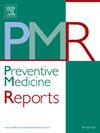Association between health insurance coverage and stage of diagnosis for cervical cancer among females in Indiana from 2011 - 2019
IF 2.4
3区 医学
Q2 PUBLIC, ENVIRONMENTAL & OCCUPATIONAL HEALTH
引用次数: 0
Abstract
Introduction
Health insurance status is an important determinant of health outcomes for patients with cancer. This study aimed to assess the extent to which health insurance coverage in Indiana is a contributing factor to the stage of cervical cancer diagnosis.
Methods
We examined reported cervical cancer cases among females (N = 2518) using cancer registry data from the Indiana Department of Health from 2011 to 2019. Analyses were carried out in SPSS. Using multinomial logistic regression, we examined associations of both insurance status and race/ethnicity with stage of diagnosis after adjusting for age at diagnosis.
Results
The multinomial analysis showed that uninsured females (OR = 2.42, 95 % CI = 1.35–4.35) and those who have Medicaid (OR = 2.36, 95 % CI = 1.62–3.42) were significantly more likely to be diagnosed at the regional stage than the in-situ stage compared to females with private insurance. Additionally, Black (OR = 1.98, 95 % CI = 1.21–3.24) and Hispanic females (OR = 2.19, 95 %CI = 1.04–4.61) were significantly more likely to be diagnosed at the regional stage than the in-situ stage when compared to Non-Hispanic White females. Females who are uninsured (OR = 4.43, 95 % CI = 2.23–8.44) and those who have Medicaid (OR = 3.03, 95 % CI = 1.91–4.80) were significantly more likely to be diagnosed at the distant stage than in-situ, compared to females with private insurance.
Conclusion
Insurance status and race/ethnicity are associated with later stages of cervical cancer diagnosis. Increased coverage for routine cervical cancer screening and preventive care services is recommended, especially for racial/ethnic minority populations, the uninsured and those with public insurance.
求助全文
约1分钟内获得全文
求助全文
来源期刊

Preventive Medicine Reports
Medicine-Public Health, Environmental and Occupational Health
CiteScore
3.90
自引率
0.00%
发文量
353
 求助内容:
求助内容: 应助结果提醒方式:
应助结果提醒方式:


